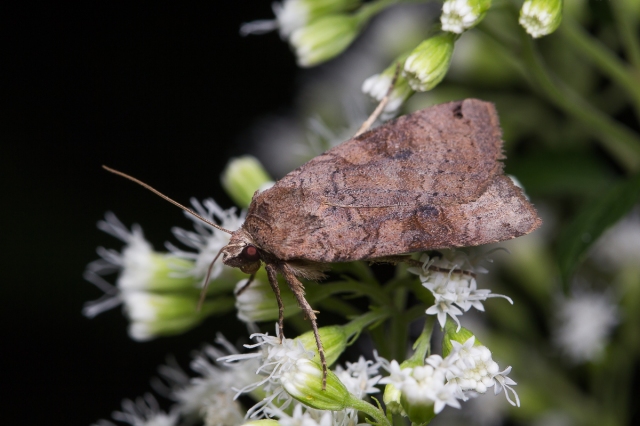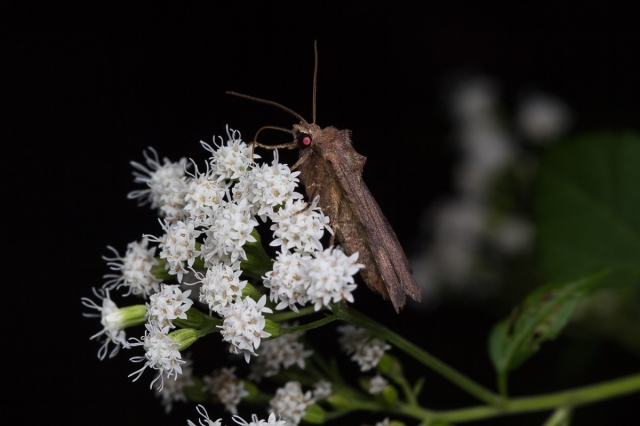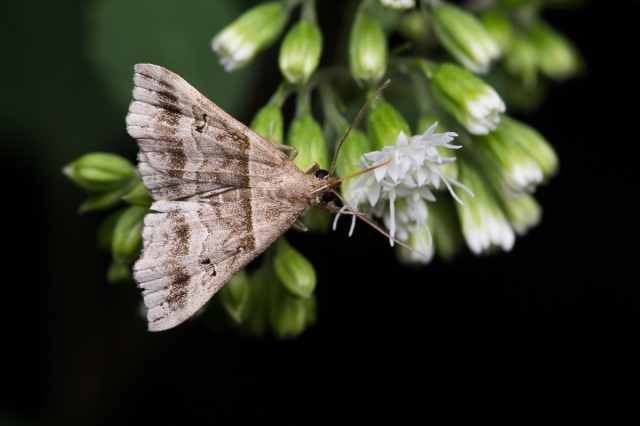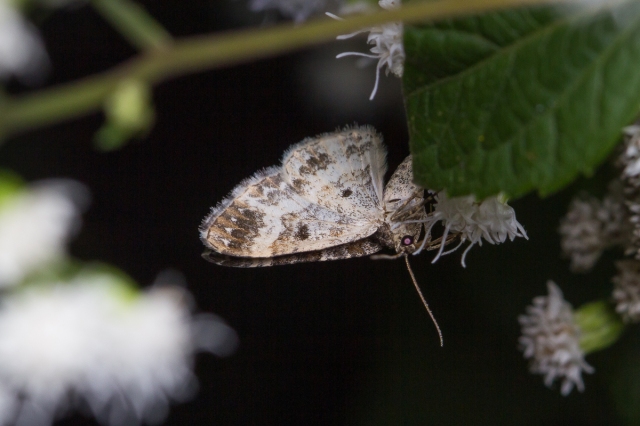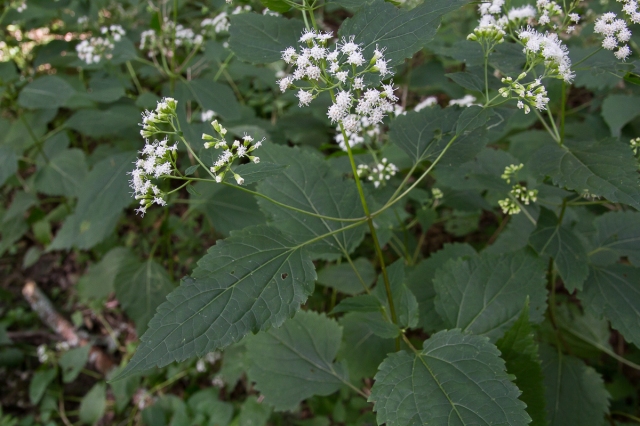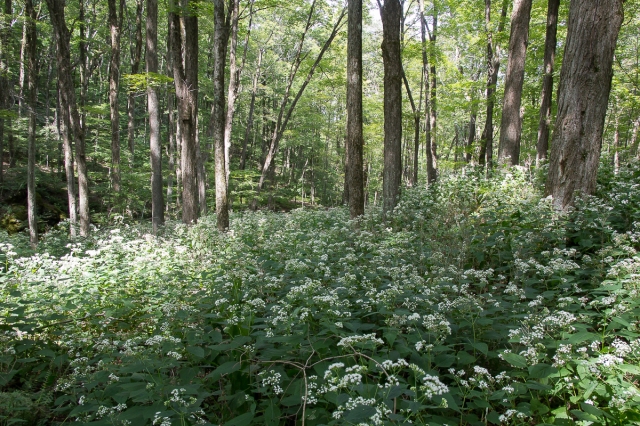Nocturnal Visitors of White Snakeroot
By Kyle Bradford
White flowers are thought to be attractive to night-feeding moths because the white color reflects ambient light, such as that from the moon, making the flowers visible in low light conditions. White Snakeroot (Ageratina altissima) is in the aster family and is a common, late-season, white flowering plant in our landscape. It can be found along forest edges and openings in forests, preferring somewhat nutrient-rich and moist conditions. With all this White Snakeroot blooming I wondered what nocturnal visitors might be nectaring, so I took a moment to observe a few patches after dark.
I found a few species of moths nectaring including (identifications tentative) Smith’s Dart, White-banded Toothed Carpet, and Dark-banded Owlet.
White Snakeroot has opposite leaves, which are toothed and egg-shaped. The leaves also have three main veins coming from their base.
Make a nighttime White Snakeroot observation for yourself and let us know what you find!

